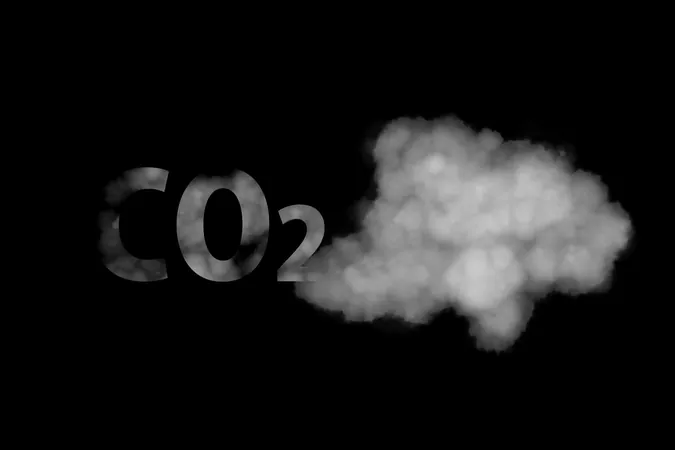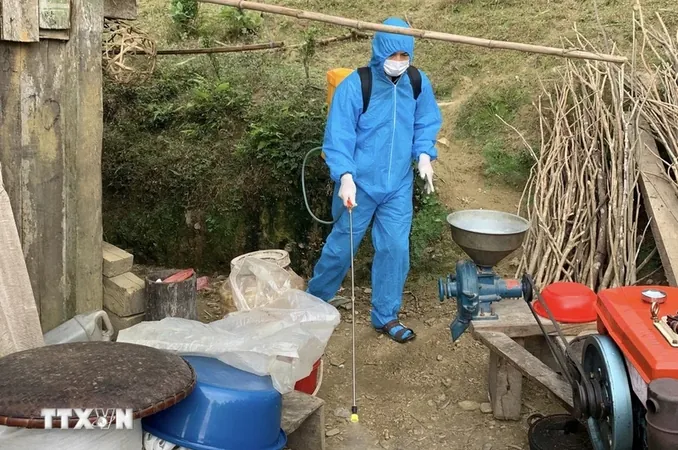
The Surprising Role of CO₂: Protecting Our Cells While Wrecking the Climate?
2024-11-26
Author: Ming
Introduction
In a world where carbon dioxide (CO₂) is often demonized for its role in climate change, recent research reveals an astonishing twist: this ubiquitous gas may actually play a protective role at the cellular level. According to a breakthrough study conducted by a team of chemists at the University of Utah, CO₂ engages in a fascinating interplay with our cells that could reshape our understanding of diseases tied to oxidative stress.
The Cellular City
Our cells resemble bustling cities, relying on intricate systems to function effectively. A critical player in this dynamic is hydrogen peroxide (H₂O₂), which serves not only as a cleaning agent but also as a signaling molecule. However, during stress events like inflammation or intense energy demands, oxidative stress can wreak havoc on our cells, inflicting genetic damage through a reaction called the Fenton reaction, where reactive hydroxyl radicals are produced.
The Protective Role of CO₂
But researchers discovered that introducing CO₂ into this mix transforms the game. With the presence of dissolved carbon dioxide, the outcome of the Fenton reaction shifts dramatically. Instead of generating the destructive hydroxyl radicals that damage DNA indiscriminately, the reaction favors the generation of carbonate radicals, which have a significantly less harmful impact on genetic material. "It's like throwing a dart at the bullseye instead of a shotgun blast," notes Cynthia Burrows, the study's lead author.
Implications for Disease
The implications of this discovery are profound. CO₂ might have a hidden side as a protective agent, potentially influencing a range of oxidative stress-related diseases, including various cancers and age-related conditions. The team's research highlights not only the resilience of our cells but also the need for refined methodologies in cellular studies, given that conventional laboratory conditions often fail to simulate the CO₂-enriched environments that cells thrive in.
Call for Refined Methodologies
Burrows emphasizes that many scientists might unknowingly create misleading results by not accounting for CO₂'s buffering effects in their experiments. Traditional cultures set at 37°C often lack the necessary concentration of carbon dioxide, likening the situation to performing experiments with a flat soda – devoid of the fizz that gives it its qualities.
Practical Applications in Extreme Conditions
As a result, Burrows and her team advocate for the inclusion of bicarbonate – a natural compound that helps balance pH levels and is often found in common baking powder – in studies to reflect true cellular conditions. They speculate this adjustment could lead to more accurate findings when investigating DNA damage.
Relevance to Space Missions
Interestingly, the research doesn't stop at the laboratory. The ramifications extend to practical applications in extreme conditions, such as space missions. With astronauts confined in sealed environments, managing CO₂ levels becomes crucial. Their findings suggest that slight augmentations in CO₂ concentration might provide a protective buffer against radiation damage, which also produces harmful hydroxyl radicals.
Conclusion
In conclusion, this intriguing duality of carbon dioxide presents an unexpected narrative: while it endangers our planet's climate, it could serve as a bastion of protection for our cells. As the scientific community continues to explore this paradox, it raises compelling questions about how we might harness the good that CO₂ offers, even as we strive to combat its detrimental climate effects.



 Brasil (PT)
Brasil (PT)
 Canada (EN)
Canada (EN)
 Chile (ES)
Chile (ES)
 España (ES)
España (ES)
 France (FR)
France (FR)
 Hong Kong (EN)
Hong Kong (EN)
 Italia (IT)
Italia (IT)
 日本 (JA)
日本 (JA)
 Magyarország (HU)
Magyarország (HU)
 Norge (NO)
Norge (NO)
 Polska (PL)
Polska (PL)
 Schweiz (DE)
Schweiz (DE)
 Singapore (EN)
Singapore (EN)
 Sverige (SV)
Sverige (SV)
 Suomi (FI)
Suomi (FI)
 Türkiye (TR)
Türkiye (TR)